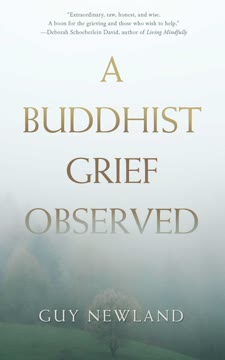Key Takeaways
1. Grief is a universal yet deeply personal journey of adjusting to unwanted change
Loss and fear of loss give us our daily shape as we feel and think and choose, anxious and scrambling.
Grief is pervasive. It affects everyone, from micro-griefs of daily stress to the profound loss of loved ones. The physical and emotional symptoms of grief can be intense, including bodily aches, violent shaking, and a constant hollow sensation in the gut. Many experience a concussion-like state, with difficulty concentrating and remembering tasks.
Grief is unique to each person. While there are common experiences, such as waves of pain that come and go, each person's grief journey is shaped by their relationship with the deceased and their own life circumstances. This uniqueness can lead to feelings of isolation, as if one is undergoing a secret experiment that others cannot understand.
Physical symptoms of grief:
- Whole-body aches
- Violent shaking
- Hollow sensation in the gut
- Difficulty concentrating
- Memory issues
2. Buddhist teachings can provide perspective but do not exempt us from pain
Knowing the first noble truth does not exempt us from it!
Buddhism offers insights, not immunity. While Buddhist teachings on impermanence and the nature of reality can provide a framework for understanding loss, they do not eliminate the pain of grief. Many practitioners find themselves surprised by the intensity of their emotions, even after years of spiritual practice.
Balancing wisdom and compassion. The challenge for Buddhist practitioners is to hold both the ultimate truth of emptiness and the conventional reality of loss. This means acknowledging the pain of separation while also recognizing the interconnectedness of all beings. It's important to avoid using Buddhist concepts as a way to bypass genuine emotions or judge oneself for experiencing grief.
Key Buddhist concepts relevant to grief:
- Impermanence
- Emptiness
- Interconnectedness
- Compassion for self and others
3. Mindfulness and self-compassion are essential tools for navigating grief
To practice is to approach each moment with kindness and curiosity, with humor and a dignified humility.
Mindfulness allows us to be present with pain. Rather than trying to escape or suppress difficult emotions, mindfulness encourages us to observe our experiences with openness and without judgment. This can help prevent the compounding of suffering that often comes from resisting or denying our grief.
Self-compassion is crucial. It's common for grieving individuals to judge themselves for not coping "better" or for having certain emotions. Cultivating self-compassion means treating oneself with the same kindness and understanding that one would offer a friend. This includes recognizing that suffering is a part of the human experience and that one's feelings are valid.
Mindfulness practices for grief:
- Body scan to connect with physical sensations
- Breath awareness to anchor in the present moment
- Labeling emotions without judgment
- Loving-kindness meditation for self and others
4. The concept of karma should not be used to blame victims or justify suffering
There is no assurance that life—this one or any other—will be fair.
Karma is often misunderstood. Many people interpret karma as a cosmic system of justice, where every misfortune is the result of past misdeeds. This view can lead to victim-blaming and unnecessary guilt. Instead, karma should be understood as the complex web of causes and conditions that shape our experiences.
Our choices matter, but don't control everything. While our actions do have consequences and help shape our character, they interact with countless other factors beyond our control. This understanding can help us take responsibility for our choices without falling into the trap of believing we can control all outcomes.
Healthier ways to think about karma:
- Focus on present choices rather than past "deserving"
- Recognize the interconnectedness of all actions
- Cultivate compassion for self and others in the face of suffering
- Use the concept to motivate ethical behavior, not to explain misfortune
5. Helping others in their grief can be a powerful healing practice for oneself
If you don't tend to one another, who then will tend to you?
Compassionate action heals. When we reach out to support others who are grieving, we often find that our own pain is eased. This doesn't mean our grief disappears, but rather that we connect with our shared humanity and find meaning in our experiences.
Skillful help requires presence. The most powerful way to support someone in grief is often simply to be present with them, without trying to fix or change their experience. This means listening without judgment, acknowledging their pain, and offering practical support when needed.
Guidelines for supporting others in grief:
- Listen more than you speak
- Avoid platitudes like "everything happens for a reason"
- Offer specific, practical help (e.g., meals, childcare)
- Continue to check in over time, as grief doesn't follow a set timeline
- Share memories of the deceased, if appropriate
6. Death and impermanence are fundamental truths that shape our human experience
Everyone is mortally wounded. We are all defrauded by our own fairy tale.
Facing mortality transforms perspective. Recognizing the reality of death and impermanence can lead to a profound shift in how we approach life. It can motivate us to prioritize what truly matters and to live with greater intention and appreciation for each moment.
Impermanence applies to everything. Not only do our bodies and relationships change, but our thoughts, emotions, and sense of self are also in constant flux. Understanding this can help us hold our experiences more lightly and with less attachment.
Reflections on impermanence:
- Consider how your priorities might change if you knew you had limited time left
- Notice the constant changes in your body, thoughts, and surroundings
- Reflect on how past losses have shaped your current perspective
- Practice gratitude for the temporary nature of both joys and sorrows
7. Intimate relationships and family bonds are both challenges and opportunities for growth
Marriage may be a gravely serious yogic discipline.
Relationships as spiritual practice. Close relationships, especially with family and partners, provide a unique arena for personal and spiritual growth. They challenge us to confront our own limitations, fears, and attachments, while also offering opportunities for deep connection and love.
Balancing attachment and openness. The challenge in intimate relationships is to cultivate deep care and commitment while also recognizing the impermanent nature of all things. This paradox can be a powerful catalyst for spiritual growth, teaching us to love fully while also practicing non-attachment.
Lessons from intimate relationships:
- Learning to communicate honestly and vulnerably
- Practicing forgiveness and letting go of resentments
- Balancing personal needs with care for others
- Confronting fears of loss and abandonment
- Cultivating presence and mindfulness in daily interactions
8. Honoring the deceased involves carrying forward their legacy of compassion
We can only commit ourselves to living up to what she embodied.
Continuing bonds through action. One powerful way to honor those we've lost is to embody the qualities we admired in them. This might mean carrying forward their work, cultivating their virtues, or simply living with the kind of compassion and integrity they exemplified.
Sharing their story and impact. Another way to honor the deceased is to share their story and the impact they had on others. This not only keeps their memory alive but can also inspire others and spread the positive influence they had in the world.
Ways to honor the deceased:
- Volunteer or donate to causes they cared about
- Share stories and lessons learned from them with others
- Incorporate their positive qualities into your own life
- Create or participate in rituals or memorials that celebrate their life
- Use their example as motivation to live with greater purpose and compassion
Last updated:
FAQ
1. What is "A Buddhist Grief Observed" by Guy Newland about?
- Personal account of grief: The book is a deeply personal narrative of Guy Newland’s experience with grief after the death of his wife, Valerie, from cancer.
- Buddhist perspective on loss: It explores how Buddhist teachings and practices intersect with the raw reality of grief, questioning and reflecting on their effectiveness.
- Universal and particular: While rooted in Newland’s specific story, the book addresses universal themes of loss, suffering, and the human condition.
- Honest exploration: Newland offers an unvarnished look at the pain, confusion, and transformation that accompany profound loss, without resorting to easy consolations.
2. Why should I read "A Buddhist Grief Observed" by Guy Newland?
- Authentic voice: The book provides a rare, honest account of grief from a practicing Buddhist and scholar, challenging common spiritual platitudes.
- Practical insights: Readers gain practical advice on supporting themselves and others through grief, informed by both personal experience and Buddhist wisdom.
- Relatable and compassionate: Newland’s vulnerability and compassion make the book accessible to anyone facing loss, regardless of religious background.
- Challenges assumptions: The book questions traditional interpretations of karma, suffering, and consolation, encouraging readers to think critically about spiritual teachings.
3. What are the key takeaways from "A Buddhist Grief Observed" by Guy Newland?
- Grief is isolating but universal: Deep grief feels uniquely personal, yet it is a common human experience that connects us all.
- Buddhist practice doesn’t erase pain: Buddhist teachings can offer perspective, but they do not eliminate the rawness of loss or shield us from suffering.
- The importance of honest presence: Being present with one’s own pain and with others’ suffering is more helpful than offering empty consolations or advice.
- Karma is complex: The book challenges simplistic views of karma as cosmic justice, emphasizing the interplay of personal choices and uncontrollable circumstances.
4. How does Guy Newland define and describe grief in "A Buddhist Grief Observed"?
- Grief as adjustment to change: Newland defines grief as the process of adapting to unwanted change, both in daily life and in the face of major loss.
- Physical and mental impact: He describes grief as a “season in hell,” with symptoms like insomnia, shivering, numbness, and loss of identity.
- Not a linear process: Grief is depicted as coming in waves, not neat stages, and often includes feelings of alienation and disconnection from others.
- Social secrecy: The book highlights how society encourages hiding the full extent of grief, leading to further isolation for the bereaved.
5. What role do Buddhist teachings and practices play in "A Buddhist Grief Observed"?
- Mindfulness and observation: Newland attempts to use Buddhist mindfulness to observe his grief, though he finds it difficult in the depths of pain.
- No magical immunity: The book dispels the myth that Buddhist practice can prevent or quickly resolve grief, showing that even seasoned practitioners suffer deeply.
- Emptiness and impermanence: Buddhist concepts like emptiness and impermanence are explored, but Newland finds they offer limited comfort in acute grief.
- Compassion and presence: Ultimately, Buddhist practice is most helpful in fostering compassion for oneself and others, and in encouraging honest presence with suffering.
6. How does "A Buddhist Grief Observed" by Guy Newland address the concept of karma?
- Critique of “strong karma”: Newland challenges the idea that all suffering is the direct result of past actions, calling this view unkind and unsupported by evidence.
- Karma as interconnectedness: He suggests a more nuanced understanding of karma, likening it to waves or probabilities rather than a strict system of rewards and punishments.
- Limits of control: The book emphasizes that while our choices matter, many events—like illness or loss—are beyond our control and not “deserved.”
- Moral implications: Newland warns that a simplistic view of karma can lead to victim-blaming and discourage social action against injustice.
7. What advice does Guy Newland offer for supporting others in grief in "A Buddhist Grief Observed"?
- Presence over solutions: The most helpful support is often simply being present, listening, and bearing witness, rather than offering advice or platitudes.
- Avoiding harmful clichés: Newland cautions against telling the bereaved that their loss is “for the best” or that they will “get over it,” as these can invalidate their pain.
- Acknowledge the loss: He encourages acknowledging the reality and significance of the loss, rather than avoiding the topic or pretending things are normal.
- Individualized care: Recognize that each person’s grief is unique, and what helps one person may not help another; genuine intention and humility are key.
8. How does "A Buddhist Grief Observed" explore the relationship between grief, self, and identity?
- Loss of self: Newland describes how losing a loved one can feel like losing a part of one’s own identity, leading to a sense of hollowness or unreality.
- Rebuilding identity: The process of grief involves slowly reconstructing a sense of self, often shaped by new responsibilities and relationships.
- Universal vulnerability: The book highlights that everyone is “mortally wounded” by loss, and that facing this truth can foster deeper compassion and connection.
- Letting go of specialness: Newland suggests that awakening from the belief that one’s pain is uniquely private is a step toward healing and solidarity.
9. What does "A Buddhist Grief Observed" say about the limitations of spiritual or religious consolation?
- No easy answers: The book argues that religious or spiritual consolations often fail to address the real pain of grief, and can even increase suffering if they create unrealistic expectations.
- The danger of denial: Relying on spiritual platitudes can lead to denial or repression of genuine emotions, hindering the grieving process.
- Embracing not-knowing: Newland advocates for “not knowing” and bearing witness, rather than clinging to doctrines or explanations that may not fit the situation.
- Honesty over comfort: True spiritual practice, according to Newland, involves honest engagement with suffering, rather than seeking to escape or explain it away.
10. How does Guy Newland use personal stories and examples in "A Buddhist Grief Observed"?
- Valerie’s illness and death: The book is anchored in the detailed account of Valerie’s diagnosis, decline, and death, as well as the impact on their family.
- Other losses: Newland shares stories of previous losses, such as the death of a former partner and his father, to illustrate the ongoing nature of grief.
- Encounters with others: He includes anecdotes from friends, students, and fellow mourners, showing the diversity of grief experiences and responses.
- Buddhist and literary references: The narrative is interwoven with Buddhist parables, Zen koans, and literary quotes, enriching the personal account with broader context.
11. What are the most important concepts and practices discussed in "A Buddhist Grief Observed" by Guy Newland?
- Not knowing and bearing witness: Inspired by Joan Halifax, Newland emphasizes the value of approaching grief with humility and openness, rather than certainty.
- Compassionate action: The book advocates for compassionate presence and practical support, both for oneself and others.
- Mindfulness and loving-kindness: Newland discusses the use of mindfulness and loving-kindness meditation as tools for navigating intense emotions.
- Challenging toxic positivity: He critiques the cultural pressure to view suffering as a “gift” or to maintain constant positivity, advocating instead for honest engagement with pain.
12. What are some of the best quotes from "A Buddhist Grief Observed" by Guy Newland, and what do they mean?
- “Grief is the process of adjusting to unwanted change, and since change is unrelenting, we bear every day unrecognized micro-griefs.” — Highlights the ubiquity of loss and the ongoing nature of adaptation.
- “Shock and pain are not a personal failure. It is cruel to judge ourselves so harshly; it is unhelpful to blame ourselves for being human.” — Reminds readers that suffering is a natural part of life, not a sign of spiritual inadequacy.
- “We are all post-traumatic, pre-traumatic, or—most often—both.” — Emphasizes that everyone is touched by loss, whether in the past, present, or future.
- “If you don’t tend to one another, who then will tend to you?” — A call to compassionate action, echoing the Buddha’s teaching on mutual care.
- “Our well-being, our dignity, is already fulfilled when we forget ourselves in acts of love.” — Suggests that meaning and healing are found in selfless compassion, not in seeking control or cosmic fairness.
Review Summary
A Buddhist Grief Observed receives mostly positive reviews, with readers appreciating its insights into grief, Buddhism, and the human condition. Many find it thoughtful and comforting, praising the author's honesty and perspective on loss. Some readers value its practical advice and reflections on Buddhist teachings. While a few reviewers found parts didactic or struggled with certain aspects, overall, the book is seen as a valuable resource for those dealing with grief or interested in Buddhist approaches to loss and change.
Similar Books
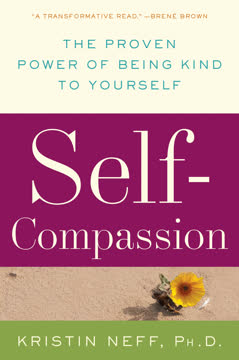





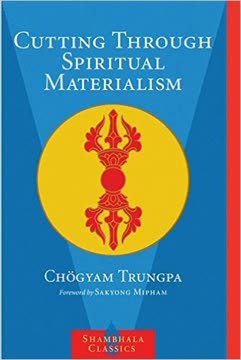
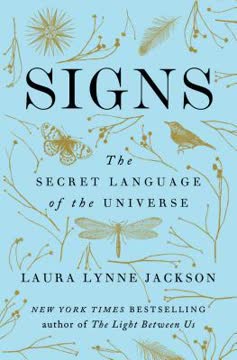
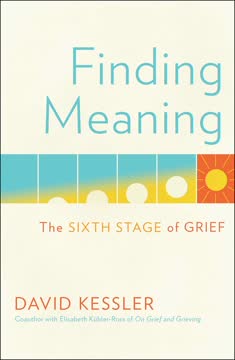
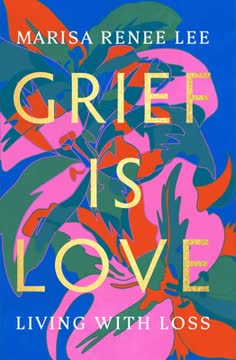
Download PDF
Download EPUB
.epub digital book format is ideal for reading ebooks on phones, tablets, and e-readers.
